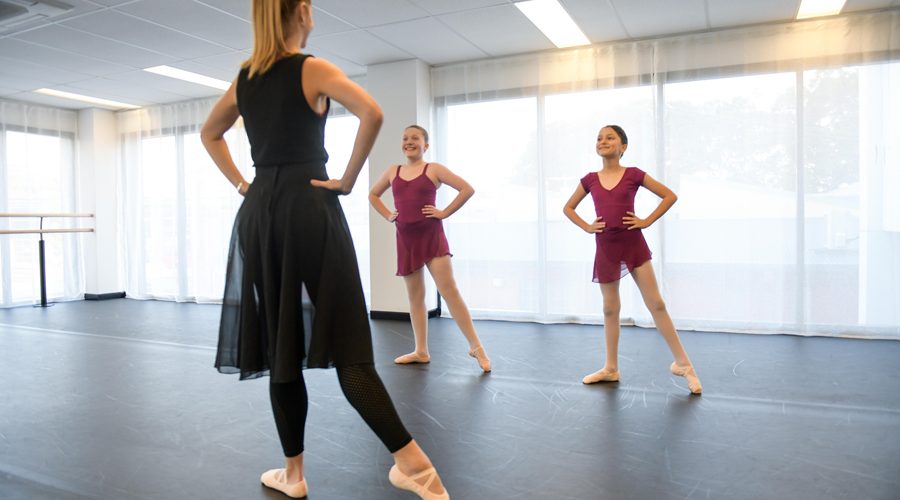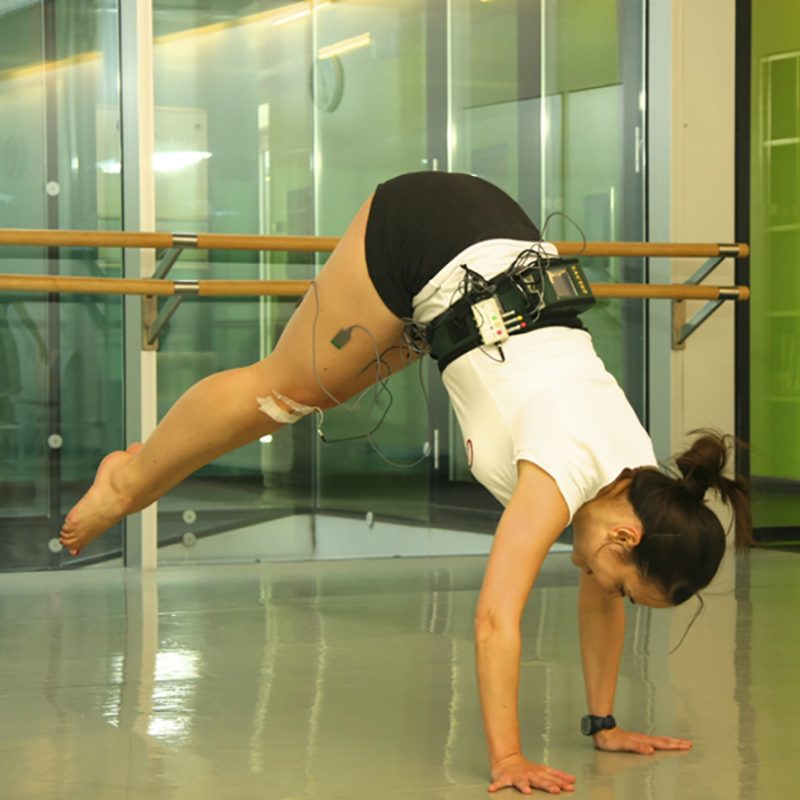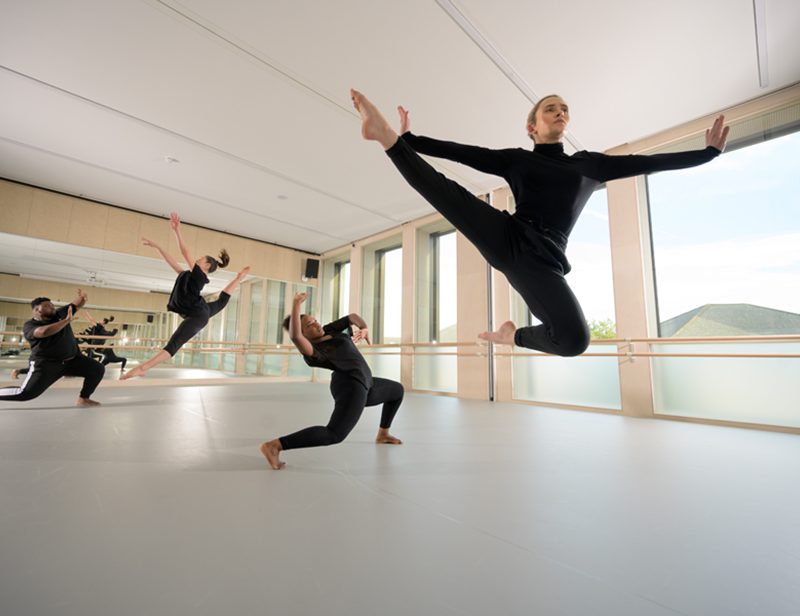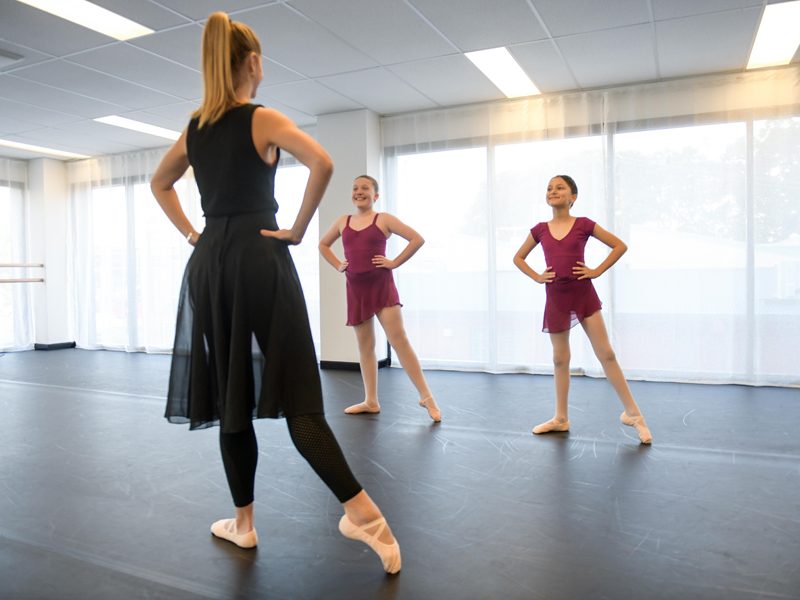Professional dancers can spend hours working in a dance studio, it is their place of work and should offer a safe environment fit for purpose. The floor is a dancer’s most important work tool; not only is it the canvas for their creativity, it also gives them protection against slips, falls and longer-term stress injuries.
British Harlequin
Experienced dancers can judge a good floor instinctively as to whether or not it feels right. And if it feels right they can effectively forget about the floor and concentrate on putting all their focus and concentration into the artistic performance. A confidence that comes from a reassurance they are not going to slip and fall, that lifts can be performed safely and on landing from jumps the response of the floor consistently returns the right amount of energy absorption. Quantifying this subjective rating of a floor into a series of repeatable tests is no simple task. Anyone specifying floors for dance should remember that dancers may not be the commissioning clients, but they are the end users. Major dance companies understand this, which is why it is not uncommon to ask their dancers to “test” floors before the final choice is made.
It is a common assumption that a well-designed sports floor will suit the needs of dancers, but this is not the case.
There are some critical factors that distinguish the requirements of dance from those of sports played on a sports floor. Many sports require a firm floor which allows balls to bounce predictably. By contrast dancers need more absorption from the floor to protect them on landing from jumps. A good dance floor instills confidence in dancers to give full expression to their creativity, safe in the knowledge the dance floor will offer a consistent response.
Unlike sportsmen who wear increasingly high-tech air-cushioned shoes to give grip and protect against impact injuries, the modest ballet shoe has barely changed in design since the mid-18th century. Made from soft leather, canvas or satin, the ballet shoe is very flexible, has a thin sole and offers little protection for the wearer.
But not all dance floors are the same, only a floor developed specifically for dance will do. There may be a temptation to specify floors for aesthetic or budget reasons, or to specify sports floors in the mistaken belief they will be suitable for dance but there have been some high-profile examples where floors have had to be replaced by a dance company after the building is complete and dancers have their first experience of dancing on the floors.
Generally, dancers should refuse to perform on unsuitable floors and demand the right to have a touring floor that has the same absorbent characteristics as the floor installed in their rehearsal studio. A dance floor should be neither too supple nor too soft. A hard floor has the effect of causing serious return shock waves and can bring about injuries or premature wear in the cartilage. A soft floor causes the muscles, and therefore the tendons, to work harder. Additionally, a floor that is too soft can be dangerous for dancers because of the effect of surprise.
The flooring manufacturer has a role to play in ensuring dancers have a safe environment in which to rehearse and perform.
Harlequin is widely recognised as the world’s leading authority on dance floors. As an enlightened manufacturer Harlequin has always worked closely with the dance community to develop floors that dancers want to dance on. Flooring products in the Harlequin portfolio were typically evolved to meet the specific needs of a particular dance style and have been developed in conjunction with dancers themselves.
Aware of the high injury level among dancers, Harlequin is an active supporter of IADMS (International Association for Dance Medicine and Science) and of NIDMS (National Institute of Dance Medicine and Science). NIDMS through shared expertise and a network of multidisciplinary partners, is working to provide better and more affordable access for all dancers to high quality, evidence-based, dance specific health care and dance science support services.
Leading dance companies from around the world trust Harlequin to keep their dancers safe in their rehearsal dance studios, on stage and, more recently, whilst dancing from home.
But this assurance of quality is not only applicable to elite dancers. It is equally important to provide amateur dancers in performing arts colleges, universities and schools with the same quality flooring. Aspiring dancers need protection too if they are to avoid cutting short their potential dance careers.
There is no doubt, the choice of flooring is critical. For over 40 years Harlequin has been the performance floor of choice for the world’s most prestigious dance and performing arts companies, theatres, venues and schools.
Harlequin’s experience and reputation are founded on the design, manufacture and supply of a range of high quality portable and permanent sprung and vinyl floors chosen by the world’s leading venues – from the Royal Opera House, to the Bolshoi Theatre, the Paris Opera Ballet to Queensland Ballet.
Harlequin offers free advice to ensure dance companies, schools and venues install dance floors best suited to their particular use.











